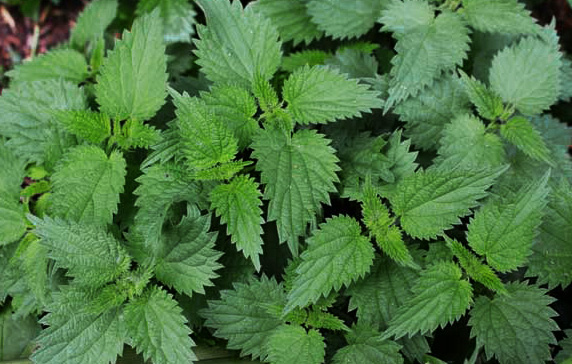Stinging and Wood nettles are mostly found in the backyards and woods. Both are delicious and healthy plants having certain nutritious benefits. Wood nettle is native to Eastern and Central North America while Stinging nettle is mostly found in Pacific Northwest.
In American culture, stinging nettles occupy a more prominent position, although “prominent” is an exaggeration, as the vast majority of people continue to view them as invasive plants. When European immigrants arrived in the United States, they took their culinary understanding of plants with them, which is why stinging nettles are so popular in the United States.
Wood nettle is a nonwoody perennial with a single, somewhat zigzag stem and stinging hairs. Flowers are tiny, light green, and clustered in small clusters in panicles that emerge from the leaf axils. The blooming period is usually from May to August. The leaves are alternating, with long petioles, oval, pointy, and coarsely toothed blades.
Wood nettle and stinging nettle are frequently confused with one another because both possess stinging hairs. However, the leaves of wood nettle are alternating, whereas the leaves of stinging nettle are opposite one another. Wildlife uses these woods’ nettles to hide from predators. Although few mammals eat wood nettle, white-tailed deer eat the leaves on occasion, despite the stinging hairs.
Wood Nettle vs Stinging Nettle Identification
The stems of the stinging nettle are hollow, ribbed, and thick.
The leaves are heart-shaped and dark green colored. They have harsh teeth and a rough, papery appearance. This plant grows along roadsides, along forest edges, in woods, and near mountains. These plants’ blossoms are pink or salmon in color.
Wood nettle, on the other hand, has alternating leaves and a few stinging hairs. When compared to stinging nettle leaves, these have a more rounded appearance at the base. This plant grows in woodlands, along streambeds, and near rivers. These plants have white or greenish-white flowers.
Wood Nettle vs Stinging Nettle Benefits
Nettles are a source of many herbal medicines. They are used as a cure for arthritis. The chemical components in nettle leaf help to relieve inflammation. The symptoms of benign prostatic hyperplasia are also treated by the nettle root extracts.
Nettles thrive in a variety of situations, but they prefer fertile, phosphate-rich soil and provide excellent manure when decomposed. Nettles and the extracts made from them are used to treat a variety of painful conditions, including rheumatism, arthritis, and dandruff.
Wood nettle is high in calcium, manganese, potassium, vitamins A, C, and iron and has a flavor similar to spinach when cooked. It is a tonic that helps to build blood. Native Americans also use wood nettle as a pot-herb. A fiber that is derived from the stem of the wood nettle is utilized in the production of cordage and nets and is regarded as being fifty times more resilient than cotton.
Stinging nettle is useful in the following ways:
- Stinging nettle is used in herbal therapy since ancient times.
- Stinging nettle is used to alleviate arthritis and lower back discomfort.
- The roots and leaves of stinging nettle contain a range of minerals, including vitamins A, C, and K, as well as numerous B vitamins, potassium, iron, calcium, magnesium, phosphorus, and sodium.
- The stinging nettle is also used as a natural hay fever cure.
- Stinging nettle is used to control high blood pressure.
Wood Nettle vs Stinging Nettle Recipes
The flavor of nettles is neutral, so the tops of nettles are utilized in various types of recipes. Nettles are also used in a variety of creative ways.
Stinging nettle is a nutritious and tasty wild plant with both culinary and therapeutic properties. The sting is gone once it is cooked, and it is mostly eaten like any other leafy green. There are different recipes for the utilization of stinging nettle in food. One such recipe is Tropical Stinging Nettle Smoothie.
Smoothies are an excellent way to incorporate vegetables and other healthful meals that are difficult to consume. To prepare this smoothie, a certain mix of vegetables and fruits is added to the plant. Tropical smoothies always have coconut milk and pineapple as the main ingredients. After this, blend the mixture on high speed for up to one minute till it becomes a smooth purée. A delicious smoothie is ready to serve after this procedure.
Similarly, wood nettle is also a source of food because of its flavor and nutritious value. One recipe for wood nettle is steamed wood nettle. The following ingredients are required for this recipe
- 8 oz. freshly harvested young wood nettles.
- Salted butter.
- Lemon wedges.
- Salt.
- Black pepper.
Procedure:
The procedure involves the following steps:
- Wash the leaves of the wood nettle and drain them.
- Pour water into a steamer basket and place it in a large pasta pot.
- Let the water boil and then add the leaves and put the lid on the pot for about 4 minutes.
- After this, taste the nettles if they are cooked well or if the sting is gone.
- If the smell does not exist, then serve them with butter, lemon, and salt.



